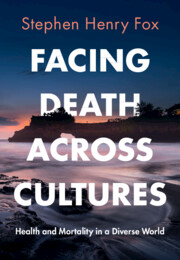Book contents
- Facing Death Across Cultures
- Facing Death Across Cultures
- Copyright page
- Dedication
- Contents
- Figures
- Tables
- Acknowledgments
- Introduction to a Cultural Species
- Module 1 The Basic Psychological Components of Culture
- Module 2 Becoming Human
- Module 3 Acculturation
- Module 4 Multicultural Adaptation
- Module 5 Health and Well-Being
- Module 6 Disease and Healing
- Module 7 Diversity and the Conventional Medical World
- Module 8 Thinking about Death
- Module 9 Managing Mortality and Difficult Passages
- Module 10 Cultures Approach the End
- Module 11 Critical and End-of-Life Care
- Module 12 Culture, Passages, and Psychosocial Supports
- Glossary
- References
- Index
- References
References
Published online by Cambridge University Press: 20 February 2025
- Facing Death Across Cultures
- Facing Death Across Cultures
- Copyright page
- Dedication
- Contents
- Figures
- Tables
- Acknowledgments
- Introduction to a Cultural Species
- Module 1 The Basic Psychological Components of Culture
- Module 2 Becoming Human
- Module 3 Acculturation
- Module 4 Multicultural Adaptation
- Module 5 Health and Well-Being
- Module 6 Disease and Healing
- Module 7 Diversity and the Conventional Medical World
- Module 8 Thinking about Death
- Module 9 Managing Mortality and Difficult Passages
- Module 10 Cultures Approach the End
- Module 11 Critical and End-of-Life Care
- Module 12 Culture, Passages, and Psychosocial Supports
- Glossary
- References
- Index
- References
- Type
- Chapter
- Information
- Facing Death Across CulturesHealth and Mortality in a Diverse World, pp. 257 - 298Publisher: Cambridge University PressPrint publication year: 2025

